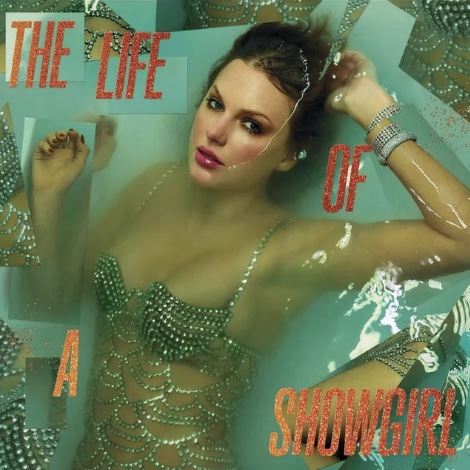Thirty-one lengths. About 248 feet. That’s the astonishing distance by which Secretariat won the 1973 Belmont Stakes, a victory so monumental some observers call it the greatest athletic achievement of all time, human or otherwise.
But that’s not all Secretariat, whose story is told in a movie of the same name opening Friday, accomplished. He was the first Triple Crown winner in 25 years, setting records at the Kentucky Derby and Belmont Stakes that still stand. He appeared on the covers of Time, Newsweek and Sports Illustrated in the same week. And he was the only nonhuman chosen by ESPN as one of the “50 Greatest Athletes of the Century,” coming in at No. 35, ahead of legends likeMickey Mantle, Oscar Robertson and Wilma Rudolph.
“He’s the best I’ve ever seen. Not even close,” says William Nack, author of “Secretariat: The Making of a Champion,” the book on which the film is based. “It would be difficult to top his Triple Crown. Each he broke the track record, and two of them still stand today, 37 years later. It’s the signature five weeks in the sport.”
Adds “Secretariat” director Randall Wallace: “I thought this was a story of transcendent courage, the horse had done what no one believed could be done. (The film) seemed a way to experience that kind of courage and physical drama.”
But the movie is not just the story of a superior thoroughbred. It tells how a woman named Penny Chenery (played by Diane Lane) took over her father’s financially troubled stable, won the rights to an unborn foal in a coin toss, then hired an eccentric Canadian named Lucien Laurin (John Malkovich) to train him.
(Five horses were used to play Secretariat, most of whom had run races, but with limited success. One, Trolley Boy, a thoroughbred, had even won the annual Secretariat lookalike contest, held at the Secretariat Festival in Paris, Ky.)
Most important, though, Wallace had to figure out a way to ignore the pitfalls that have bedeviled numerous horse racing movies in the past. And according to those who know, those failures are manifold.
“By and large, there are more bad racing movies than good ones,” says Bill Christine, a veteran turf writer for the Los Angeles Times and Daily Racing Form. “Hollywood has good racing stories, but they have to jazz it up, and in doing so they look silly to frequent racegoers. The big problem shooting horse movies is shooting a race. It’s expensive and complicated. It’s not like you have eight horses and follow them around the track and then you go home. Horses aren’t like actors, where they operate on cue. Many racing movies fall down because the races look phony.”
Nack says filmmakers fail to capture the beauty of the racetrack atmosphere. “They miss the dew in the morning, and the beauty of seeing horses coming to the track. They miss the romance of the track. The rhythms of the track are very distinctive, and I don’t get that from any horse racing movie. The track is like a painting by Matisse; it’s a watercolor.”
Wallace, who never went to the track growing up and thought “horse racing was for rich people and gamblers,” sees an additional problem with racing films. “They tend to be saccharine and romanticized,” he says. “And they’re filmed in that way. Horse racing movies tend to make the audience spectators of the sport. This might be inherent in the activity itself, because most of us have never been on a racehorse. I want to be a participant in those things, and I want the audience to share that.”
The director says he accomplished this by employing real jockeys in the races, and with tight close-ups to focus “regularly on Secretariat’s dependence on the world around him — shooting into his eyes, the shifting of his hoofs, the twitching of his muscles. We shot this movie so you get a real sense of this horse. We feel his excitement and point of view of the world.”
Wallace also learned quickly that thoroughbreds are delicate animals that can only run for so long without becoming thoroughly exhausted. “So we could run quarter-mile stretches, then set up a new angle, rest the horse for 30-45 minutes, do another quarter-mile stretch,” he says. “Then we’d have to rest them. It’s a tedious process. It took five to six days to shoot the Derby sequence alone.”
Will audiences respond to this tale of the turf? Except for the Triple Crown and the Breeders’ Cup, live attendance at the track is generally in the toilet. But when it comes to film, the racing picture is more upbeat: the last big thoroughbred movie, 2003’s “Seabiscuit,” based on a bestselling book, grossed more than $120 million domestically. As far as Christine is concerned, there’s no reason why contemporary filmgoers won’t respond to this greatest of all horses.
“He did something almost no horse has ever done, which is winning the Triple Crown” Christine says. (Since Secretariat, the last Triple Crown winner was 1978’s Affirmed.) “And I think the casual guy might remember that. This horse captured the general public, and I think people who don’t know horse racing they’d know this is something special.”
Nack agrees. If Secretariat had been running today, he would generate enormous interest because “he was very charismatic,” Nack says. “He was a gorgeous-looking horse, and that means a lot. He was breaking records, he had the turf-writing community agog. And I think if he had done the same thing in 2010, there would have been a tremendous clamor to know more about him.”
———
BEST BETS AMONG RACING FLICKS
Interested in spending a day at the track without leaving your living room? You can rent these thoroughbred classics:
“National Velvet” (1944) — Classic girl-and-her-horse tale about a youngster (Elizabeth Taylor) who wants to race her horse in the Grand National Steeplechase. Also starring Mickey Rooney, with terrific color photography.
“Casey’s Shadow” (1978) — Walter Matthau stars as a Louisiana trainer preparing his quarter horse for the big All-American Futurity in Ruidoso, N.M.Low-key, but filled with character-filled moments.
“The Black Stallion” (1979) — Beautifully directed and filmed story about a young boy and his relationship with the magnificent title horse. Also featuring Rooney, who was Oscar-nominated for his work as a veteran trainer.
“Phar Lap” (1983) — Fascinating true story of a New Zealand-born super-horse who mysteriously died after winning a big race in Mexico in 1932. A real crowd-pleaser.
“Let It Ride” (1989) — Totally fun comedy-drama about compulsive gambler Richard Dreyfuss, who finally hits a winning streak at a Florida track. Anyone who has ever laid down a bet at the track can relate to this film.
“Seabiscuit” (2003) — Big-budget film based on the Laura Hillenbrand bestseller about the mishandled and undersized horse who became a major champion in the 1930s. The top-notch cast includes Tobey Maguire, Jeff Bridges, Chris Cooper and William H. Macy.
“Dreamer” (2005) — Daughter Dakota Fanning and down-on-his-luck trainer dad Kurt Russell rehabilitate an injured horse and take it to the Breeders’ Cup. Formulaic, but totally engrossing and moving.
“The First Saturday in May” (2007) — Terrific documentary about six wildly different trainers as they attempt to get their horses into the Kentucky Derby. Filled with colorful characters and great racing moments.
———
(c) 2010, Newsday.
Visit Newsday online at http://www.newsday.com/.
Distributed by McClatchy-Tribune Information Services.
—————








